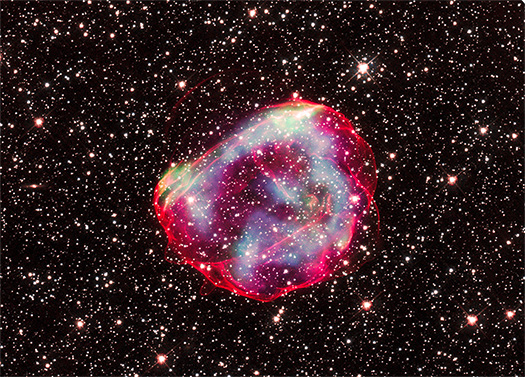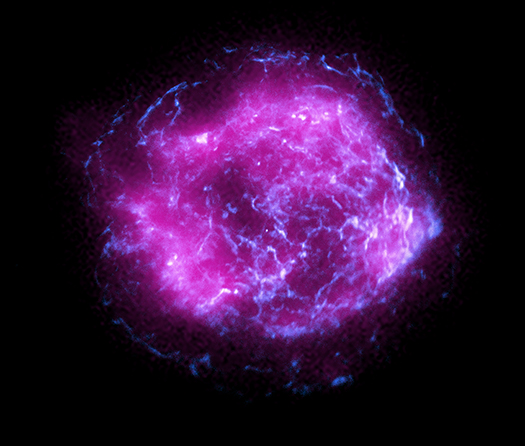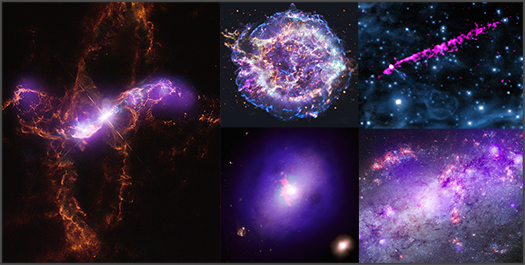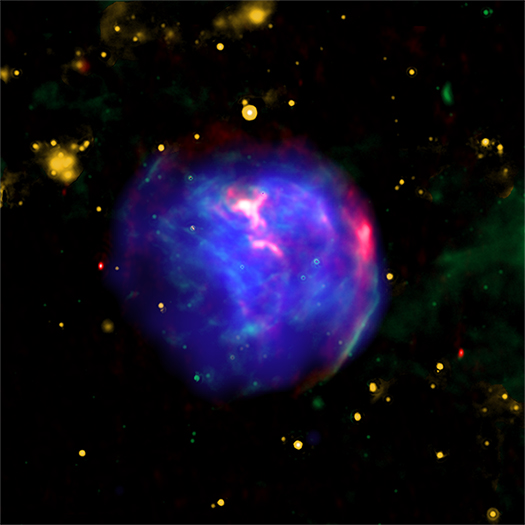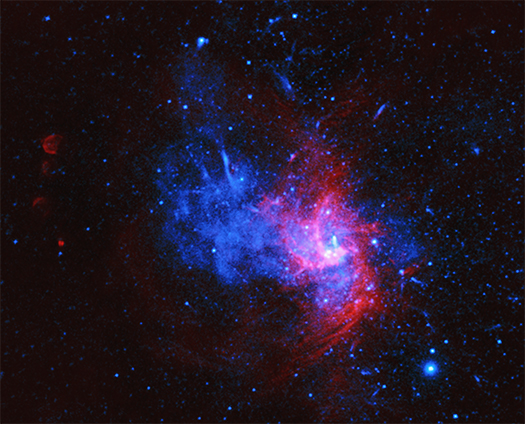NASA's IXPE Helps Unlock the Secrets of Famous Exploded Star
Submitted by chandra on Mon, 2022-10-17 09:48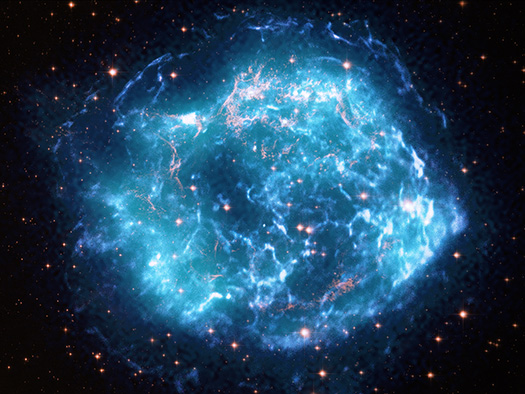
Cassiopeia A
Credit: X-ray: Chandra: NASA/CXC/SAO, IXPE: NASA/MSFC/J. Vink et al.; Optical: NASA/STScI
For the first time, astronomers have measured and mapped polarized X-rays from the remains of an exploded star, using NASA’s Imaging X-ray Polarimetry Explorer (IXPE). The findings, which come from observations of a stellar remnant called Cassiopeia A, shed new light on the nature of young supernova remnants, which accelerate particles close to the speed of light.
Launched on Dec. 9, 2021, IXPE, a collaboration between NASA and the Italian Space Agency, is the first satellite that can measure the polarization of X-ray light with this level of sensitivity and clarity.
All forms of light — from radio waves to gamma rays — can be polarized. Unlike the polarized sunglasses we use to cut the glare from sunlight bouncing off a wet road or windshield, IXPE’s detectors maps the tracks of incoming X-ray light. Scientists can use these individual track records to figure out the polarization, which tells the story of what the X-rays went through.
Cassiopeia A (Cas A for short) was the first object IXPE observed after it began collecting data. One of the reasons Cas A was selected is that its shock waves — like a sonic boom generated by a jet — are some of the fastest in the Milky Way. The shock waves were generated by the supernova explosion that destroyed a massive star after it collapsed. Light from the blast swept past Earth more than three hundred years ago.

